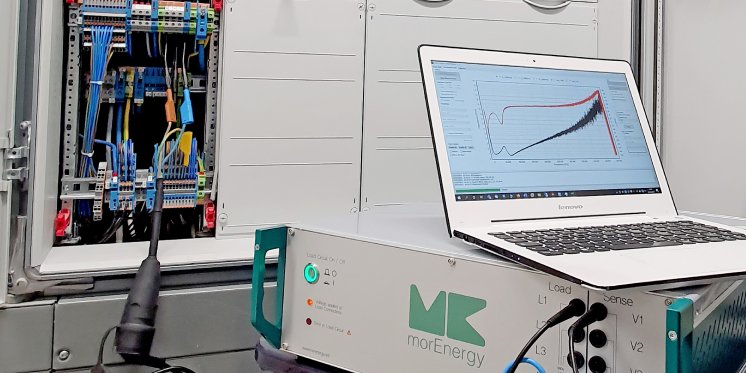Power quality effects in the super-harmonic range so far complex and difficult to understand
Nowadays, modern power electronic systems pulse at frequencies above 2 kHz. Due to net resonances and poorly dimensioned or damaged filters, increased supraharmonic current and voltage levels may occur. “Especially in high-performing systems, components such as filters, cables or transformers often heat up dramatically, which leads to faster ageing, defects in the components and ultimately a failure of the system,” explains Dr.-Ing. Michael Jordan, CTO and Co-Founder of morEnergy. “Up to now, the normative regulations have not dealt sufficiently with power quality effects in the super-harmonic frequency range, as they are complex and difficult to understand,” the expert in measurement technology says. “This is why we developed a new type of measuring device that covers precisely this range. We are pleased to be able to offer this application to the PV industry in co-operation with greentech.”
Better network transparency reduces repair costs and yield losses
The special analysis by greentech and morEnergy does not only provide plant operators with a comprehensive insight into the grid topography – it also reduces maintenance costs and yield losses. “Together with morEnergy as an expert partner on the subject of grid effects and grid monitoring, we are able to take the subject of power quality of PV plants to the next level,” says greentech Managing Director Jörn Carstensen. greentech is responsible for carrying out the measurements on site and accompanying the customer from the initial contact, through the analysis, up to the development of measures to eliminate sources of interference. “We are convinced that we are able to offer our customers real added value in terms of the longevity, yield security and transparency of their plant.”
morEnergy is an innovative engineering company for power grids and renewable energies based in Hamburg. The company’s unique selling point is the determination of grid impedance. For this purpose, the grid specialists developed measuring devices for the low and medium voltage level. These devices do not only measure the power quality – they further determine the network topography up to the 500 kHz range if required. This achieves an unprecedented level of detail. Figuratively speaking, it makes the current 2D representation become a 3D real-time image of the electrical network.

